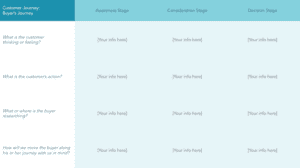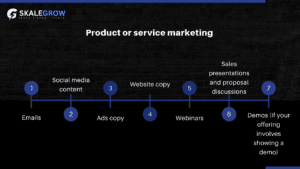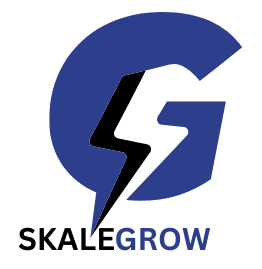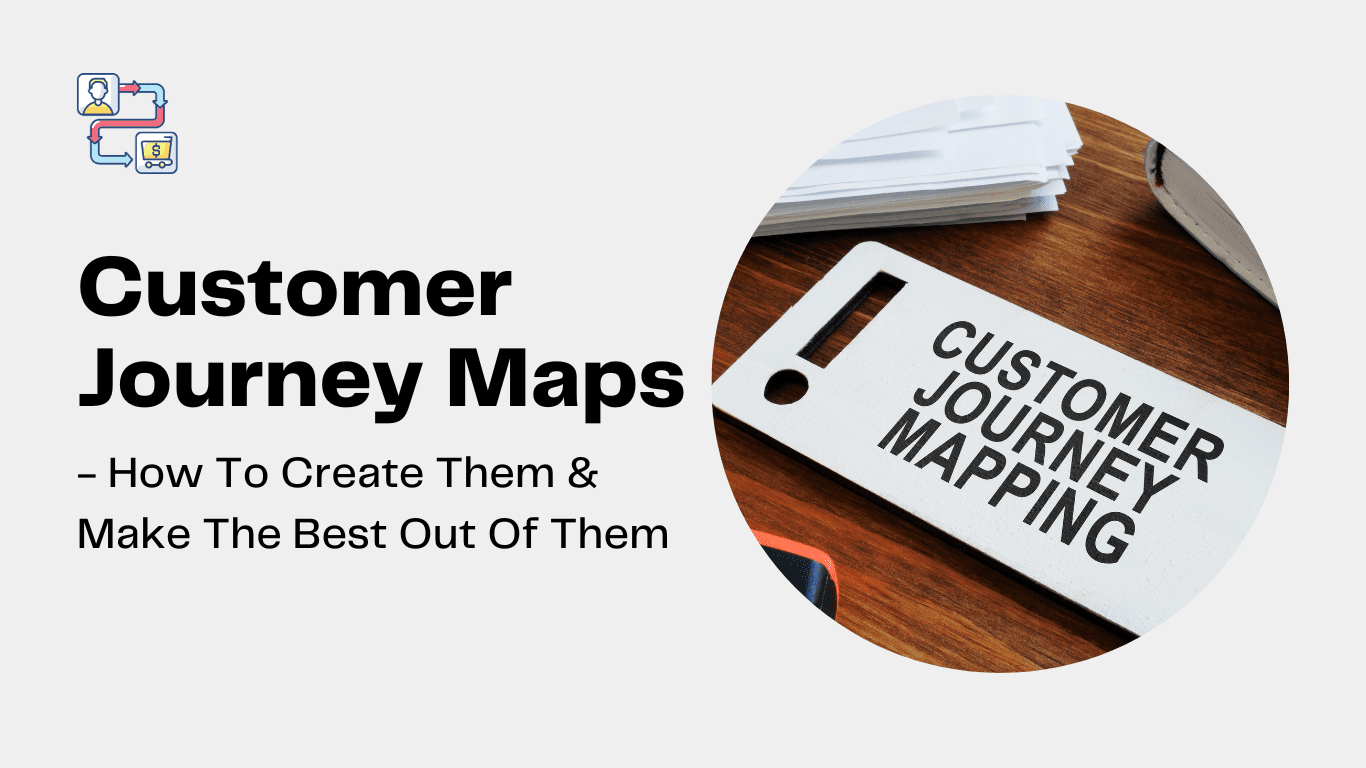This article was originally published in the Elevate Your Marketing newsletter and has been repurposed and republished here with the author’s permission. Here is the link to the original article.
Ooophh! One more article on customer journey mapping? I know. The world doesn’t need one more blog post that has regurgitated content on a topic thousands have already written about.
But here is the sad reality about B2B customer journey maps – they go unutilized by many businesses once constructed. So, in this blog post, we will focus more on how you can make the best use of customer journey maps for the growth of your B2B business.
To set the context right and consider readers unfamiliar with the concept, we will first look at what a B2B customer journey map is, why it is important for B2B businesses, and how to create it for your business.
That said, let’s roll.
What is a B2B customer journey map?
Simply put, a customer journey map in B2B visually represents all your customers’ and prospects’ interactions with your business. It considers all touchpoints and actions of customers at different stages of their lifecycle.
In its simplest form, a customer journey map can be compared to a marketing funnel, only that the former dives deep into customer interactions to understand their intent, preferences, and emotions.
Here is a customer journey map designed by HubSpot that explains the concept:

Customer Journey Map
The B2B customer journey is split into awareness, consideration, and decision stages. At each stage, we analyze the customer’s intent, actions, information sources, and how to take him/her seamlessly through the entire experience.
It is to be noted here that the journey doesn’t end with the customer making a purchase. Customer engagement and retention activities are also part of the journey map.
Further, the journey might not be linear and as simple as shown in the above diagram. Again, parallels can be drawn from what we discussed about the multi-dimensional marketing funnel in one of the previous blogs. Customers have multiple entry and exit points with an almost always non-linear journey.
To take this into account, you can further divide each stage into multiple steps and map out each activity against them (we will talk more about this when we discuss the process of creating a customer journey map in an upcoming section).
Why is a customer journey map important for B2B businesses?
One common misunderstanding is that a customer journey map is required only for B2C or e-commerce businesses. But this is far from the truth. B2B businesses need it as much to:
- Understand how customers interact with the company through various touchpoints.
- Figure out the channels that are working the best for the business.
- Learn more about customer preferences regarding placing queries, responding to emails, answering phone calls, using the website, etc.
- Create better positioning, messaging, and targeting based on customer behavior across touchpoints.
There are more benefits to using a customer journey map. But you get the point here. These maps sometimes even help uncover insights businesses would have otherwise not discovered.
How to create a B2B customer journey map
You have already seen what a basic customer journey map looks like. As mentioned, the key is to break down the various stages into individual activities.
You can do this in multiple ways. One of the ways is to visualize each stage as separate maps. Here is a template you can use to do this. It is an expanded version of the map we discussed above.
To prepare a map using the template, you need to follow the below steps:
- Identify your target persona.
- List down your target persona’s pain points and needs.
- Determine all the channels and touchpoints customers and prospects have (or could potentially have) with your business.
- Figure out all the actions each target persona performs at each step (you can even think about having separate customer journey maps for each persona for a better visual representation).
- Identify all the marketing campaigns and content assets your customers are interacting with.
- Create the map – this is obvious. You can consider using a workflow tool like UXPressia or Microsoft Visio to create the journeys
I don’t wish to get into the details of the process involved in creating a customer journey map. Here are a few useful resources you can refer to learn more about this:
- How to Create an Effective Customer Journey Map [Examples + Template]
- 7 Interesting Real Life Customer Journey Map Examples
- Customer journey map: The key to understanding your customer
How to make the most out of B2B customer journey maps
Now we have come to the core of today’s topic – how to use customer journey maps to grow your business. The fundamental idea here is to leverage all the insights from the customer journey map to fine-tune your marketing and growth activities.

How to make the most out of customer journey maps
We need to look at this topic along the following lines:
- Funnel design and analysis
- CRO (Conversion Rate Optimization)
- User experience
- Marketing channels
- Content marketing analytics
- Product/service marketing
- Marketing technology
1. Funnel design and analysis
Not every company has a similar customer journey. Depending on how customer interactions happen, the funnel stages might also change. Deeply understanding the customer journey map will help you modify and optimize the funnel for better results.
For example, as you create the customer journey map for your business, you identify a certain step in the awareness stage – say recommendation on a community (the prospect hears about your products or services in an online community conversation). You probably didn’t know about online communities impacting your business before. Based on the new information, you can go back and add this new step into your marketing and sales funnel and design a customized path for prospects who hear about you in online communities.
2. Conversion Rate Optimization in B2B customer journey map utilization
This is pretty straightforward. Knowing customer interactions is one of the best ways to optimize your landing pages, hooks, thumbnails, etc., for higher conversions. You can take the help of A/B testing tools if you wish.
3. User experience
I believe the real power of customer journey maps lies in using them along with complementary marketing tools and tactics.
What do I mean by that?
Look at what we discussed in the previous section – conversion rate optimization. CRO is complete only when you marry customer journey maps with A/B testing.
Similarly, user experience is a function of multiple parameters, of which customer journey maps also play a key role. You might have to deploy other tactics (like heatmap analysis) to draw a complete picture of user experience.
Journey maps help you identify specific touchpoints and interactions where you need to ensure that user experience has been taken into account. Such touchpoints include website, conversations with your customer support team, sales interactions, email exchanges, and more.
You need to look at user experience from a holistic standpoint. Usually, when marketers discuss user experience, they only consider the website. But even for marketers, understanding every step in the customer journey map and making efforts wherever it is relevant to enhance user experience is critical.
4. Role of marketing channels in B2B customer journey maps
Read this along with #1. Customer journey maps are a great tool to identify the different marketing channels your company is using.
But wait, you may ask, wouldn’t a company itself know the channels it is using?
The answer is, not necessarily in all cases (Think about the online community example I mentioned earlier). Creating a customer journey map involves collecting data points on everything a customer ‘touches’ related to your business. The reality is that many founders and marketing leaders do not know all their customer touchpoints. Some channels and touchpoints that you think are not contributing to the topline of your business could very well be making a great impact.
5. Content marketing analytics
Customer journey maps can be an excellent tool to:
- Map out all the content items that your customers and prospects are consuming.
- Dive into the details of which content performs well (by analyzing content-related data).
This is possible because the exercise of creating customer journey maps pushes you to list down all the content assets you have. This sometimes leads to you spotting age-old content items resting on your site – or any other channel – without being relevant or adding value to your customers or the business. This is one of the ways in which B2B customer journey maps contribute to content marketing analytics.
To learn more about content marketing analytics and how to build a system for it, please have a look at the below article:
Content Marketing Analytics – What It Is And How To Build A System For It
6. Product or service marketing in a B2B customer journey map
One of the key responsibilities of a product marketing team is to make sure the company’s value proposition is conveyed to its target audience the right way. But how do you know whether your messaging is resonating with your ICP?
It is by analyzing how they are responding to your content and copy. This can be a combination of some or all of the following touchpoints:

Product or service marketing
- Emails
- Social media content
- Ads copy
- Website copy
- Webinars
- Sales presentations and proposal discussions
- Demos (if your offering involves showing a demo)
There is more I need to add to the list. But the idea is to understand whether your target audience responds positively to your messaging.
The next natural question is, how do you determine if the messaging resonates across all these channels?
It requires a two-pronged approach – quantitative and qualitative analyses. Quantitative analysis involves analyzing the effectiveness of your messaging content in each touchpoint (for instance, you can use the content marketing analytics approach to analyze everything content). The qualitative approach is about collecting feedback from written reviews, social media comments, client emails, sales conversations, analyst organizations, etc (for analyzing sales conversations, you can consider using a sales intelligence platform like Gong or Chorus AI).
Once you gather all the necessary insights, the cycle completes only when you go back to your marketing drawing board and make changes from what you learned from the customer journey map.
7. Marketing technology
This is more operational in nature. A customer journey map reveals all the technology underlying customer interactions. When it comes to martech, you need to ask the following questions in the context of a customer journey map:
- Is my tech stack serving the needs of my customers and prospects?
- Can the tools offer a seamless user experience across all the touchpoints?
- Are there any redundant tools in the stack unnecessarily adding costs to the marketing department?
- Is it possible to pull in data without hassle from all these tools to easily create a full view of the customer journey?
By analyzing the state of your martech stack for the above, you will be in a better position to determine whether you need to make any changes.
Final words about B2B customer journey maps
Customer journey maps are one of the most overhyped yet underutilized marketing tools. What I tried to change through this blog post is the tendency to create and forget about it afterward. Many companies invest a significant amount of time into this exercise, only to end up not using them.
As I mentioned before, everyone talks about how useful customer journey maps are and how to create them. But not many discuss what’s next. I hope I was able to throw some light on that aspect of the concept.
One more thing to note here is that customer journey maps evolve. Many assume that once a customer journey map is created, other marketing and sales processes need to follow it. In fact, you need to do the opposite. Don’t change your systems to fit into your old customer journey. Rather, let how customers interact with your business define your systems and processes.
About the author

Naseef KPO is the Founder and CEO of Skalegrow. He comes with rich experience across multiple areas of B2B marketing including content marketing, demand generation, SEO, account-based marketing, marketing analytics, revenue attribution, marketing technology, etc. He writes thought-provoking and relevant articles on The Skalegrow Blog and his weekly LinkedIn newsletter Elevate Your Marketing.
Prior to starting Skalegrow, Naseef led large marketing teams in multi-million dollar B2B organizations where he made significant contributions to the topline growth of the business. He has also appeared on numerous podcasts where he shared his thoughts on trending marketing topics such as the application of AI in marketing, startup marketing, ABM, and B2B content marketing, just to name a few. Being the founder of Skalegrow, he is currently focusing on helping its clients stay ahead of their competition by using innovative yet practical marketing tactics.
You can connect with Naseef KPO on LinkedIn.


